Travel with me #92 : Aspendos and The Ancient City of Perge!
Dear Steemit friends :
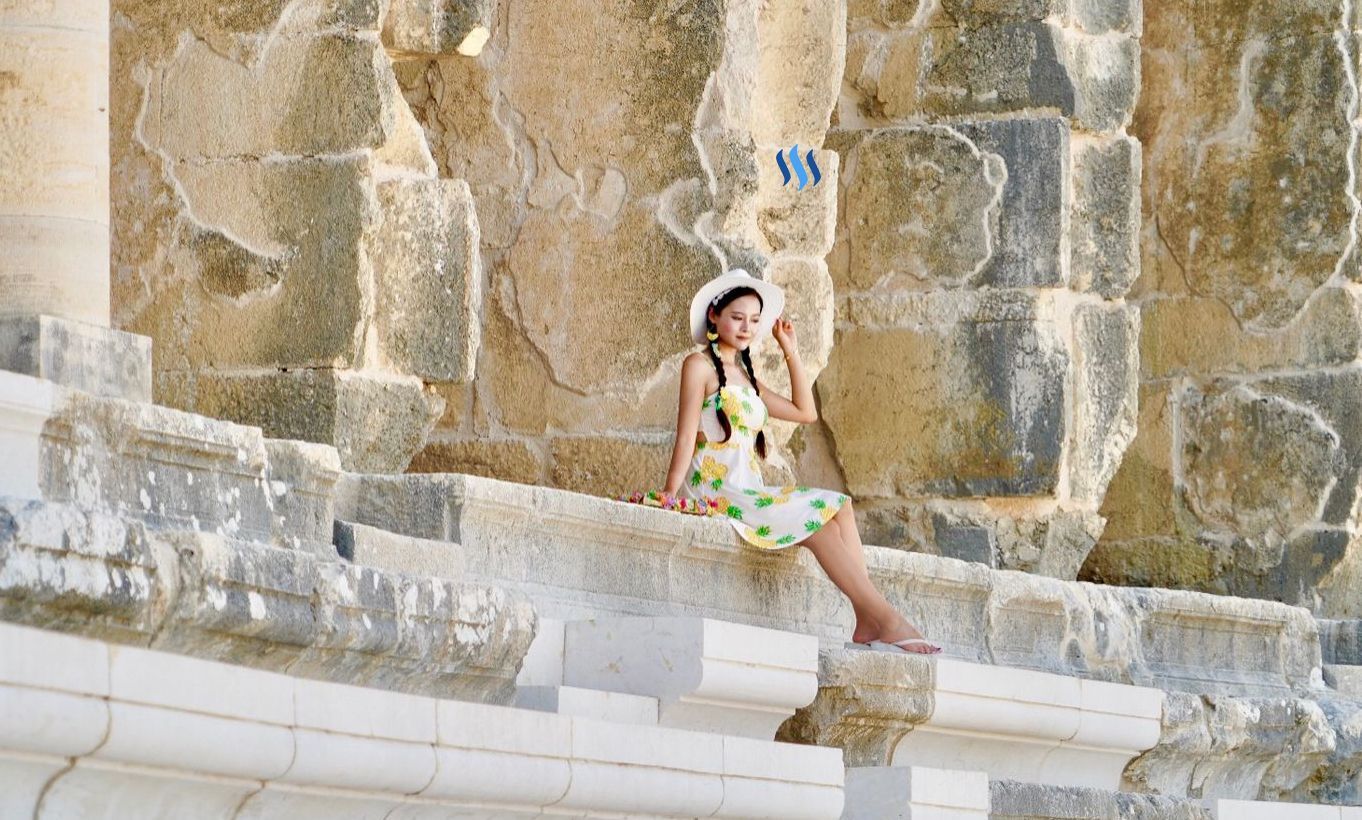
Did you know that there are more ancient Roman ruins in Turkey than there are in Italy?
In our travels around Turkey thus far, we've had the pleasure of visiting some of the worlds greatest historic sites, taking us back to the prime of the bygone ancient civilisations. Today, these ruins are littered all over Turkey, reminding us that Turkey was once a pivotal region for empires ruling Asian Minor.
Perhaps one of the most amazing ancient ruins that we've seen so far is Ephesus, the ancient city cited in the bible's Book of Revelation. It's ruins are so well preserved that walking amongst them, little imagination is needed to reconstruct them in their past glory.
Central to almost all significant settlements are the Theatres which themselves command presence because of their sheer scale and utility. The theatre at Ephesus was a well preserved and a classic example of the ancient amphitheatre. A very large, building leaning on a side of a hill, built on higher ground, and it's size, a league of it's own.
Another ancient city ruin we visited was Hierapolis, famous for its massive necropolis and not to forget the Antique Pools which Cleopatra herself once bathed in. Hierapolis was built beside the famous Pamukkale mineral springs and "Cotton Castles". As one of the largest ancient cities, it too has an impressive Theatre, one which remains very much intact and situated against a hill at the highest point of the city. The theatre grants magnificent views of the entire valley below the White Travertine Terraces as well as the entire city of Hierapolis.
Today, we'll be taking a visit to two ancient ruins near Antalya, first up, Aspen dos.!
Aspendos is an ancient town located about 40km east of the modern city of Antalya. Perhaps the most famous of it's ancient monuments is the theatre, considered the best-preserved theatre of antiquity.
Most hotels will have day trip excursions here, you only have to enquire and agree to a price. I was very lucky to find a taxi driver offering a set price to take me there. He was even happy to wait in the car park whilst I went inside. This method of transport is probably the most straight forward if a tad more expensive.
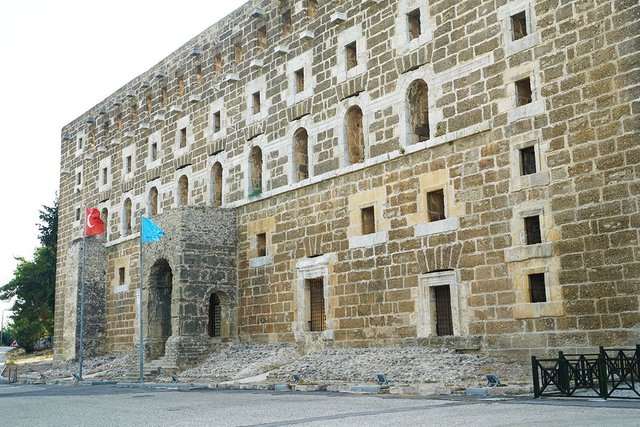
From this angle, the theatre almost looks like a regular building. Most other ancient theatres I've visited do not have such a tall skene building. I certainly wasn't expecting such a large round structure on the other side of it.
To enter the theatre, there is a side entrance which leads into this dark tunnel. On the other side, the stage area.

As soon as you come out of the Tunnel, this is the exact view you get. Pretty amazing right!?
This must be the largest Skene I've ever seen. It consists of a facade and a proscenium. The facade is two tiered and visually divided into two levels. There also used to be a wooden roof on top.
There are five doorways which give entrance inside the proscenium, the largest of which was in the middle and marked by the stone steps.
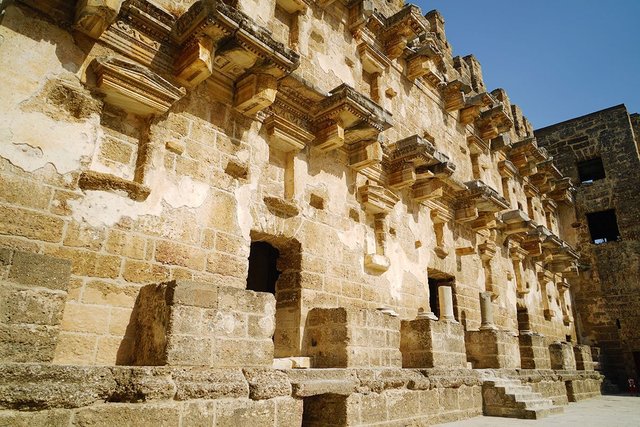
At the top of the auditorium, there is a colonnade which was primarily used to shade the spectators.
You can also see the auditorium is divided into an upper level and lower level by a horizontal diazoma.
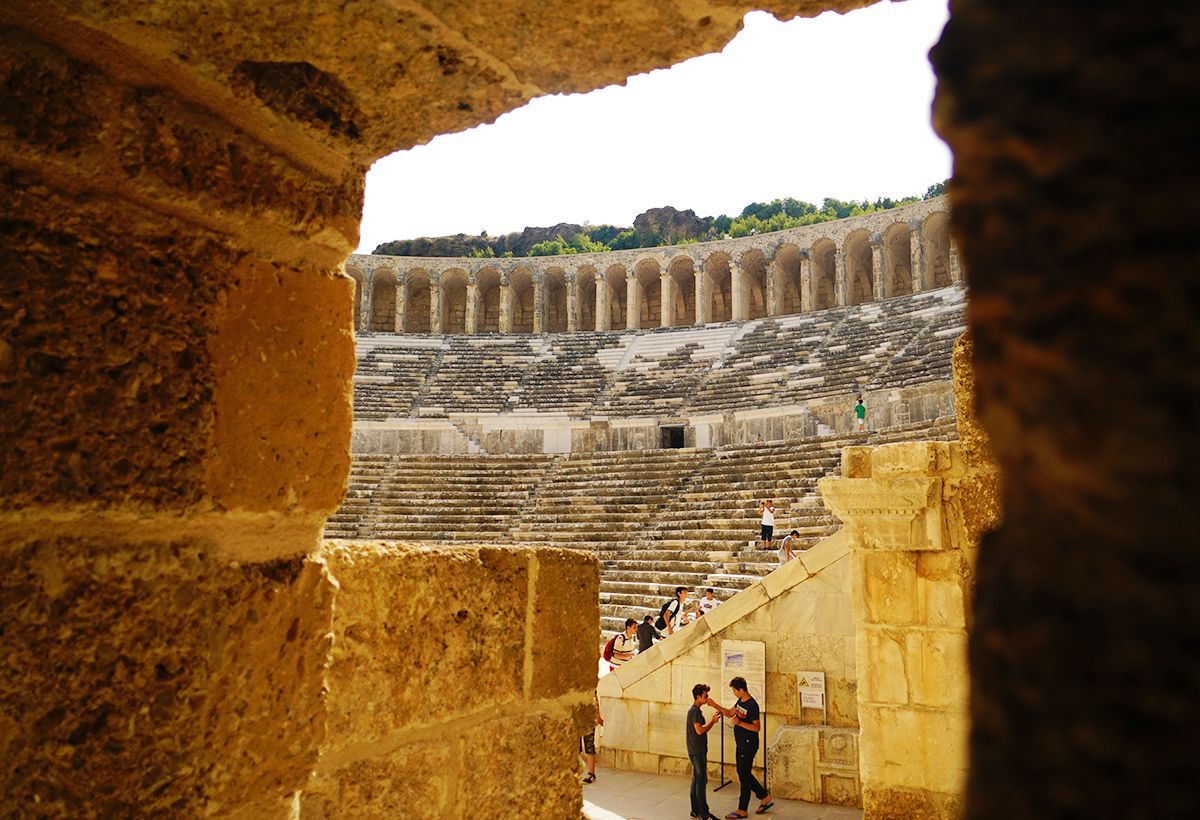
This is another view of the skene building from the upper level of the auditorium.
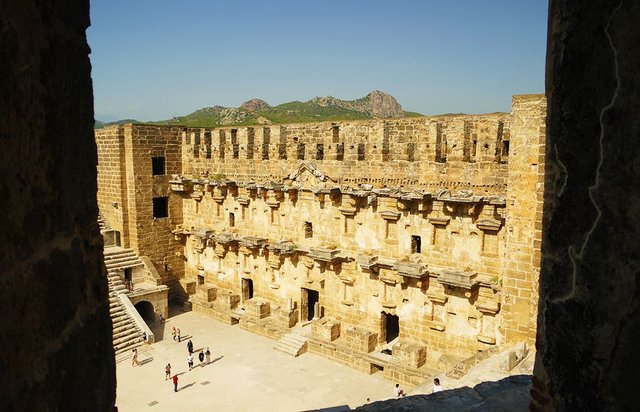

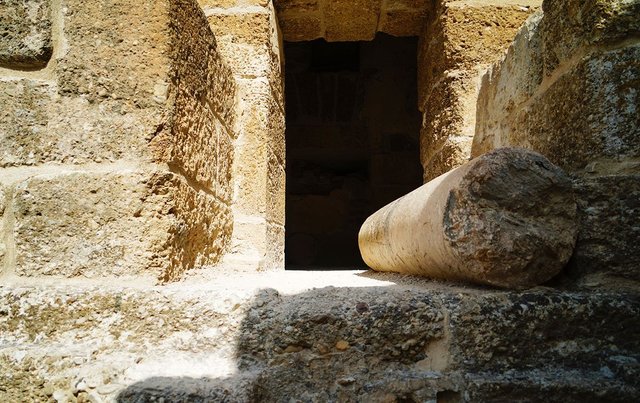
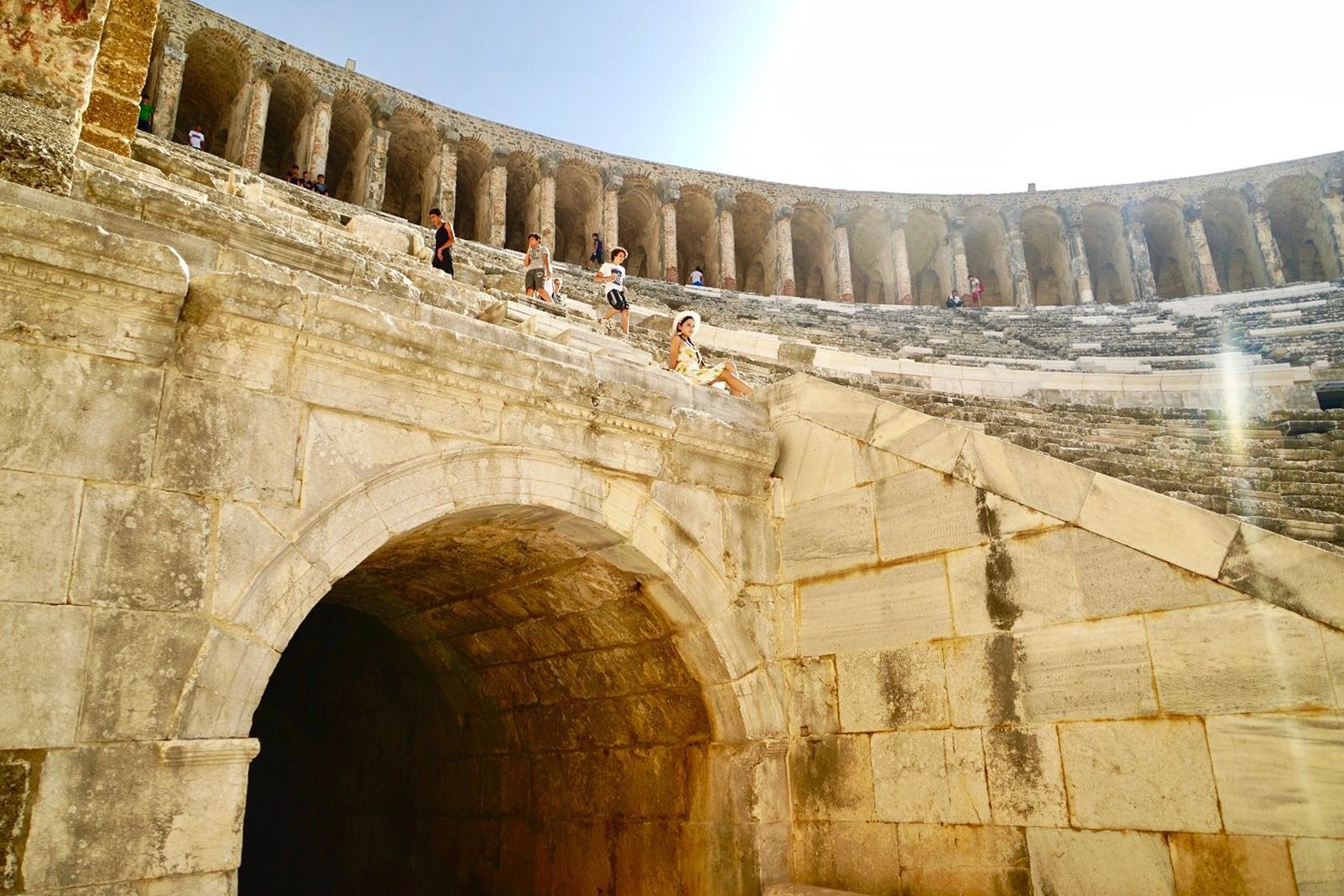
This is the arcade supported by the colonnade at the top level of the auditorium. It curves all the way round the entire horseshoe shape of the auditorium.



Sitting right at the top of the auditorium, this is the view you can expect of performances. Here you can see just how well preserved the theatre is. The skene building is almost entirely intact.
As you can see, the building has the typical features of a Greek theatre, the horseshoe shape of the auditorium, and it's back resting on the hillside. However, the theatre was actually building in the 2nd century AD under the rule of Roman emperor Marcus Aurelius, thus, the skene building gives it's Roman heritage away.
Interestingly, the architect of the theatre is known to be Zeno - a Greek architect who was born in Aspendos. He is one of the few architects known for ancient ruins.

There is supposedly a story behind the construction of the theatre.
A competition was setup by the ruler of Aspendos to marry his daughter. The winner must build something which contributes most to the cities' prosperity. Of the two finalists, one was the architect of this theatre, and the other was responsible for building the systems of canals and aqueducts which supplied Aspendos with water.
At first, the ruler was more impressed with the canals and aqueducts, but then upon visiting the theatre, he stood in this exact spot and heard a whisper in his ear.
"Your daughter will be mine"
It was the builder of the theatre and he was in fact down at the scene of the theatre. Impressed by the amazing acoustics of the theatre, the ruler awarded his daughter to the architect of the theatre. Of course, the wedding ceremony was also held here too.
THANKS GUYS FOR READING
PLEASE UPVOTE AND COMMENT
wow its really awesome
Enjoyed reading the article above explain everything in detail, the article is very interesting and effective, thank you and Good luck for the upcoming articles.
Commenting on blog is an art.good comments create relations, you are doing great work, keep it up.
Good....